Monumenta 2012
Artist Daniel Buren plants a forest of candy-colored sunshades for “Exentrique(s), travail in situ” at the Grand Palais

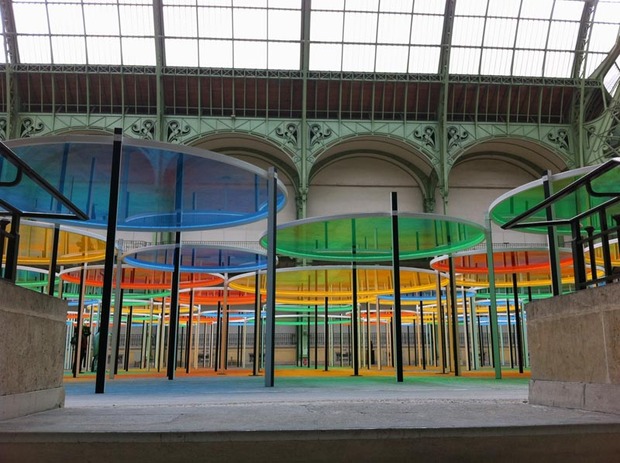
Following the installation by Anish Kapoor in 2011, Monumenta 2012 invited famed French artist Daniel Buren for the fifth edition of the annual challenge to create an installation that will fill the soaring nave of Paris’ Grand Palais. Buren’s take on the site-specific concept is “Excentrique(s), travail in situ”.
True to its name, what Buren has created can best be described as eccentric—a rainbow forest of hundreds of transparent, sunshade-like plastic saucers planted on flagstaffs spreads over the entire area of the 13,500-square-meter space, playing with the light pouring into the huge, glassy cupola to cover the ground with colorful reflected spots.
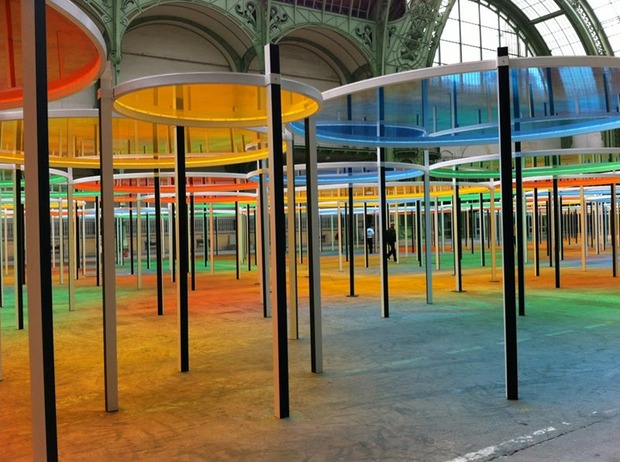
For this color-dominated installation, even the central cap of the dome itself has been saturated with a blue checkerboard to resemble the stained-glass windows of a church. Working as a huge illuminated forum, the whole display is conceived to attract, reflect, expend and multiply the light into fragments of joyful colors. At night the figure reverses and the glass roof is lit by the reflected colors of the saucers, due to a sweeping electrical device. The forest also features a relatively low ceiling that counterbalances the 35 meter height of the building.
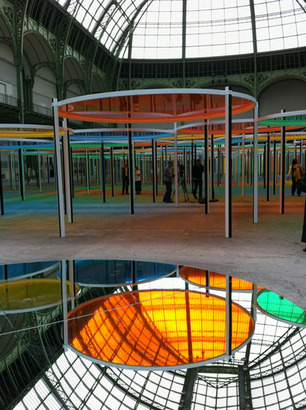
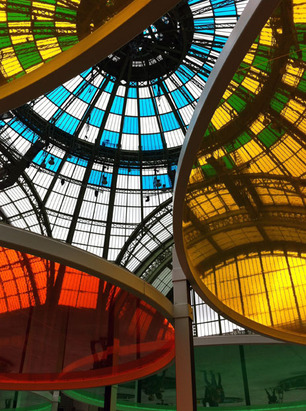
At the center of the work is an interruption in the cover of the sunshades, with disk-shaped mirrors on the floor that make the area seem like a glade among the forest of umbrellas. Their pools reflect the steel structure of the roof above, and from there, the exhibition spreads out on all sides in a dotted landscape of colorful saucers.
In keeping with the idea of the eccentric—meaning away from the middle, existing on the fringe of the mainstream—the experience was designed to keep the center from swallowing up the rest of the space. Visitors enter on the north side of the nave and exit through the south wing, an intentional course that forces the visitor to cross the length of the expanse while avoiding the center. As Buren explains, the center tends to draw all the attention and leave the rest of the space empty.
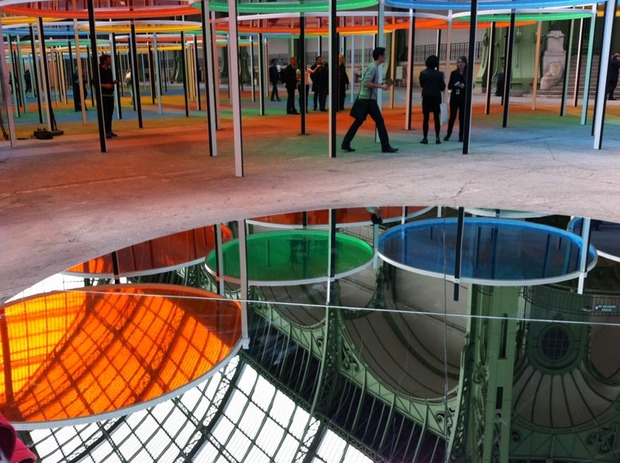
Buren touches on the idea of the eccentric by diverging quite far from his typically austere and minimalist black and white vertical stripes which established his name. Though still highly recognizable, Buren’s new work hasn’t been seen before from him, all circles, transparencies, light and color.
Having now established himself as a master of color, Buren uses his basic figures—black and white vertical flagstaffs—along with the new round shapes of the saucers and mirrors. The circle is the key figure of the installation—the high, round saucers as sunshades, the round mirrors on the floor in the center. Buren started considering the circle after he realized that the whole architecture of the Grand Palais building was based on the pattern of this figure.
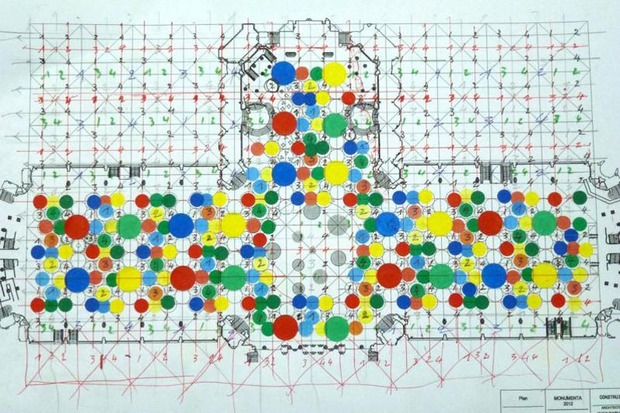
Continuing the 40-year pursuit of his work, Buren plays on forms with a mathematical approach. The game here consists in assembling tangent discs, all in contact with one another, filling the empty space as much as possible. Employing only four basic colors (blue, yellow, red and green) Buren displayed them after an alphabetical order, with blue appearing 95 times and the others, 94 times each. The installation is completed by a soundtrack comprising the repetition of the names of the colors in 40 different languages.
“Excentrique(s), travail in situ” is on display at Grand Palais through 21 June 2012.











